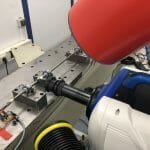The aerospace industry has two current electrification initiatives that could disrupt major players. The first electrification initiative is centred on more electric aircraft (MEA). This MEA philosophy lightens the load of aircraft by tossing heavy mechanical and hydraulic systems out the hatch in favour of electrical components.
This trend is not mainstream yet — so don’t expect to see major airlines advertise electrically powered flights any time soon. However, drones, high-altitude platform stations (HAPS), urban air mobility (UAM) and sub-regional commercial air transportation are already based on the electrification of aircraft propulsion.
The electrification of transportation industries is not shocking news. Automotive engineers have amped up development of electric powertrains for over a decade. However, aerospace is late to get on board with this trend. This is because much of the electric technology has yet to handle the power densities and voltages needed to meet the level of performance and safety standards required for certification.
This creates an opportunity for new and rising players to disrupt the industry. Not convinced? Check out Flightpath 2050. It outlines Europe’s vision for the aerospace industry. It states that future industry leaders will be the ones that develop breakthrough technology with respect to energy, environmental performance and the management of complexity. Similar statements are made in the USA’s FAA Destination 2025 outline too.
In other words, expect to see a few startups coming from nowhere. They will emerge from stealth mode just like so many others did in the space sector. These new players could be acquired, but some could become industry leaders.
In this fast-paced scenario, simulation is the most economical way to build the knowledge to understand electrification of the aerospace industry. Aerospace companies are struggling to envision how they will electrify such complex systems.
Typically, these companies build copper birds which are huge test rigs used to prototype hardware that is plugged into it. This approach is very safe and well understood. But market demands are changing too quickly to make physical prototyping viable.
The industry needs to speed up innovation by managing risks faster and economically. This is where simulation really helps. It empowers design teams to explore hypotheses and scenarios that cannot be easily reproduced in a physical test. This fail-sooner-and-cheaper mentality helps engineers learn about phenomena and optimise their designs accordingly.
Can we replace all physical testing with simulation?
No, regulations still require physical tests and these tests are a great way to ensure that the final designs work. However, engineers can do much more development within a virtual environment.
Aerospace companies understand the importance of using simulation to model fluid dynamics and structural mechanics. However, this space still has an electrical simulation adoption gap.
Perhaps this is because high-fidelity electrical and electromagnetic simulation is much younger than computational fluid dynamics (CFD) and finite element methods (FEM).
However, using multiphysics simulations, engineering teams can simulate electromagnetic performance across components, circuits and systems. This allows them to better evaluate thermal, vibration and other critical mechanical effects in a wide range of applications, such as batteries and fuel cells, electric machines, power electronics, and full system simulation.
So, one question remains, when aerospace companies can use simulation to advance their more quickly – why is this not more mainstream?








